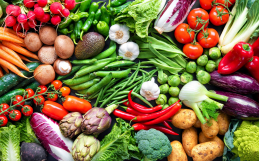We have another guest blogger for you today and she happens to be not only one of our favorite people on the planet, she’s also one of the funniest, smartest and most talented yoga teachers we know.
Meet Gina Caputo.
Gina is the Founder & Director of the Colorado School of Yoga based in Boulder with affiliate locations around the state and beyond. You can learn more about what she does and where’s she’s teaching at www.ginacaputo.com.
Read on to get her tips for how our yoga practice can help us be more mindful eaters. Eating intuitively, dealing with food cravings, and reducing stress are all topics she touches on. We know you’ll be rolling out your mat in no time. When you do, be sure to check out some of our online Conscious Cleanse detox yoga classes. You’ll find Jo’s Detox Flow here and Jules’ Hot Detox here.
Enjoy!
Mindful Eating: 5 Ways Yoga Can Help
by Gina Caputo
While many people think of yoga as a physical practice that enhances a general feeling of relaxation, that’s a narrow view of its full potential. Hatha Yoga is actually an internal practice that is accessed via your physical body.
In other words, the fruits we seek as practitioners are subtler than physical prowess, flexibility and complex postures. When we look “under the hood” at yoga, we see it as a practice that brings our inner vision into HD and that can impact EVERY aspect of your life.
Here are 5 ways your yoga practice can help you improve how you nourish yourself!
1) Awareness. By harnessing our attention to the subtlest details of our yoga practice whether they be physical alignment, the quality of breath or the movements of prana (energy) as we shift shapes, we train up our awareness skills. Next thing you know, you’re noticing everything in greater and subtler detail. The flavors and textures of food become more pronounced and complex and you have a more finely tuned sense of when you’re sated.
2) Impermanence. A well-balanced yoga practice involves some suffering. Wait, what? YES! The postures are unusual compared with the positions our bodies are in most of the rest of the day and sometimes the sensations they provoke are uncomfortable or awkward. I’m not advocating that you injure yourself, but that you welcome the opportunity to work with what feels strenuous or strong in sensation as a way to understand impermanence. Those strenuous moments in yoga begin, they have a peak, and then they end. Just like in life, everything is always changing, and this also includes FOOD CRAVINGS. Our yoga practice can help us see them too as impermanent, passing moments that can be embraced or dissolved, just like poses that we flow into and eventually flow out of.
3) Balance. Ha-Tha yoga is a practice that seeks to restore balance between polarities or opposites. Never all one nor the other. When it comes to nourishment, a similar philosophy makes sense. Rather than label foods as “good” or “bad,” what if we sought balance across the board? Not only in each meal (like representing all 6 of the tastes: sweet, sour, salty, pungent, bitter and astringent) but in your overall diet too. Nourishment includes more than just what’s good for your body, what you eat should also satisfy your mind and spirit. Balanced is the most sustainable approach.
4) Stress reduction. We’re probably all familiar with taking refuge in food when we feel stressed or anxious. A consistent Hatha Yoga and meditation practice can give us the tools to regulate our stress response and autonomic nervous system which can help cut down on overeating in response to stress, which usually leads to post-eating guilt and the cycle continues…
5) Connection. Yoga translates as union, it is a practice in the art of connection, to self, each other, Spirit and to Nature. When this connection is highlighted and more prominent in your mind, you may see the impact of your food choices more clearly and experience deeper gratitude for the bounty Nature provides for our sustenance.







